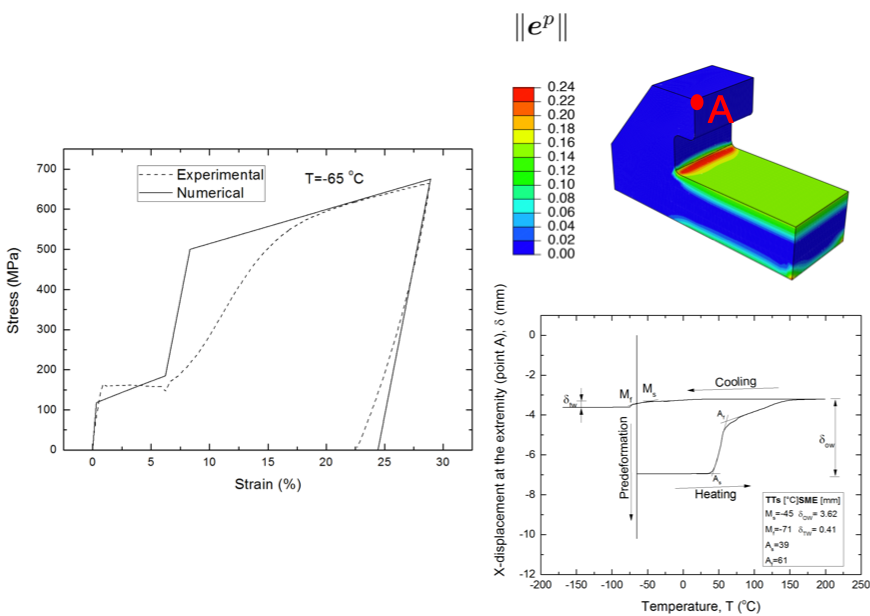The one-way and two-way shape memory effects as well as the thermal hysteresis represent important properties when dealing with the design of detachable and thermally-stable connection systems based on Shape Memory Alloys (SMAs). Material modeling is of great importance to support the design of these systems.
The recent work “A three-dimensional phenomenological model for shape memory alloys including two-way shape memory effect and plasticity“, published in Mechanics of Materials, proposes a generalization of the three-dimensional phenomenological constitutive model by Souza et al. (1998), in order to describe pseudoelasticity, one-way and two-way SMEs in severely pre-strained NiTi-based SMAs. Model results are in good agreement with the results of a performed experimental campaign and allow to predict SMA behavior under such complex loading conditions.
The work comes from a collaboration between the CompMech Group (Dr. Giulia Scalet, Prof. Ferdinando Auricchio), the University of Calabria (Prof. Carmine Maletta), and the European Organization for Nuclear Research (CERN) (Dr. Fabrizio Niccoli, Dr. Cedric Garion, Dr Paolo Chiggiato).

July 3rd, 2019

